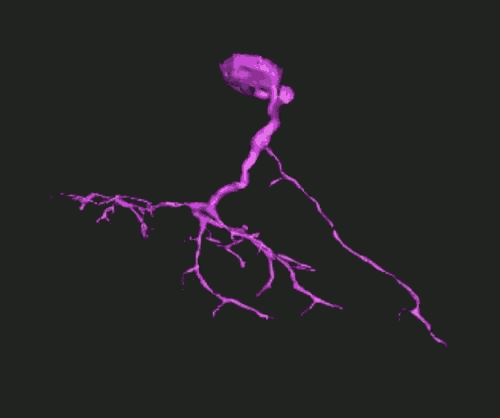Neuroplasticity
The brain is constantly adapting throughout a lifetime, though sometimes over critical, genetically determined periods of time. Neuroplasticity is the brain's ability to create new neural pathways based on new experiences. It refers to changes in neural pathways and synapses that result from changes in behavior, environmental and neural processes, and changes resulting from bodily injury. Neuroplasticity has replaced the formerly held theory that the brain is a physiologically static organ, and explores how the brain changes throughout life.
Neuroplasticity occurs on a variety of levels, ranging from minute cellular changes resulting from learning to large-scale cortical remapping in response to injury. The role of neuroplasticity is widely recognized in healthy development, learning, memory, and recovery from brain damage. During most of the 20th century, the consensus among neuroscientists was that brain structure is relatively immutable after a critical period during early childhood. It is true that the brain is especially "plastic" during childhood's critical period, with new neural connections forming constantly. However, recent findings show that many aspects of the brain remain plastic even into adulthood.
Plasticity can be demonstrated over the course of virtually any form of learning. For one to remember an experience, the circuitry of the brain must change. Learning takes place when there is either a change in the internal structure of neurons or a heightened number of synapses between neurons. Studies conducted using rats illustrate how the brain changes in response to experience: rats who lived in more enriched environments had larger neurons, more DNA and RNA, heavier cerebral cortices, and larger synapses compared to rats who lived in sparse environments.
A surprising consequence of neuroplasticity is that the brain activity associated with a given function can move to a different location; this can result from normal experience, and also occurs in the process of recovery from brain injury. In fact, neuroplasticity is the basis of goal-directed experiential therapeutic programs in rehabilitation after brain injury. For example, after a person is blinded in one eye, the part of the brain associated with processing input from that eye doesn't simply sit idle; it takes on new functions, perhaps processing visual input from the remaining eye or doing something else entirely. This is because while certain parts of the brain have a typical function, the brain can be "rewired"—all because of plasticity.
Synaptic Pruning
"Synaptic (or neuronal or axon) pruning" refers to neurological regulatory processes that facilitate changes in neural structure by reducing the overall number of neurons and synapses, leaving more efficient synaptic configurations. At birth, there are approximately 2,500 synapses in the cerebral cortex of a human baby. By three years old, the cerebral cortex has about 15,000 synapses. Since the infant brain has such a large capacity for growth, it must eventually be pruned down to remove unnecessary neuronal structures from the brain. This process of pruning is referred to as apoptosis, or programmed cell death. As the human brain develops, the need for more complex neuronal associations becomes much more pertinent, and simpler associations formed at childhood are replaced by more intricately interconnected structures.
Pruning removes axons from synaptic connections that are not functionally appropriate. This process strengthens important connections and eliminates weaker ones, creating more effective neural communication. Generally, the number of neurons in the cerebral cortex increases until adolescence. Apoptosis occurs during early childhood and adolescence, after which there is a decrease in the number of synapses. Approximately 50% of neurons present at birth do not survive until adulthood. The selection of the pruned neurons follows the "use it or lose it" principle, meaning that synapses that are frequently used have strong connections, while the rarely used synapses are eliminated.

Neuron growth
Neurons grow throughout adolescence and then are pruned down based on the connections that get the most use.
Synaptic pruning is distinct from the regressive events seen during older age. While developmental pruning is experience-dependent, the deteriorating connections that occur with old age are not. Synaptic pruning is like carving a statue: getting the unformed stone into its best form. Once the statue is complete, the weather will begin to erode the statue, which represents the lost connections that occur with old age.